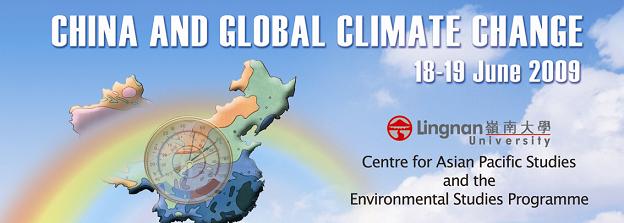
Event Title
Conference on China and Global Climate Change : Reconciling International Fairness and Protection of the Atmospheric Commons
Location
AM310, Lingnan University
Start Date
19-6-2009 11:00 AM
End Date
19-6-2009 12:30 PM
Language
English
Description
This study addresses how climate affects the livelihoods of people living in agricultural communities in Ningxia, one of the five autonomous regions in China. The analysis formed part of a vulnerability assessment to contribute to the development of an adaptation strategy for the region. Data were collected through questionnaires and focus group discussions in nine villages, three located in each of three different agro-ecosystems in the region. The survey results showed that drought has been a major hazard impacting rural livelihoods. Farmers in all three agro-ecosystems showed differing levels of vulnerability; susceptibility was higher, for instance, in the middle arid and southern rainfed mountainous areas, due to farmers’ greater exposure to climatic hazards and because a greater proportion of income originates from farming activities. Recent climate variability had affected many aspects of farmers’ livelihoods but it was not the only challenge they had faced.
The perennially dry climate is a significant limiting factor for agricultural production in the region, greatly exacerbated by periodic reductions in moisture due to drought. Unsurprisingly, farmers have developed and continue to use a wide range of measures to retain and enhance soil moisture and to maintain agricultural production in this harsh environment: adaptation is an inherent feature of their behaviour, but their capacity to act is determined by a range of factors. When questioned on the constraints they faced respondents cited most often lack of money, water shortage and agricultural inputs. Because of the close alignment at the community and household level between adaptation and more generic individual and institutional aims for development there exists good potential to incorporate adaptation objectives and measures into mainstream development plans and poverty alleviation programmes.
Document Type
Presentation
Recommended Citation
Li, Y., Wu, Y., Conway, D., Preston, F., Lin, E., Zhang, J., ... Ju, H. (2009). Rural livelihoods and vulnerability to climate hazards in Ningxia, Northwest China. In China and global climate change: Proceedings of the conference held at Lingnan University, Hong Kong, 18-19 June 2009 (pp. 460-484). Centre for Asian Pacific Studies and the Environmental Studies Programme, Lingnan University, Hong Kong.
Included in
Rural livelihoods and vulnerability to climate hazards in Ningxia, Northwest China
AM310, Lingnan University
This study addresses how climate affects the livelihoods of people living in agricultural communities in Ningxia, one of the five autonomous regions in China. The analysis formed part of a vulnerability assessment to contribute to the development of an adaptation strategy for the region. Data were collected through questionnaires and focus group discussions in nine villages, three located in each of three different agro-ecosystems in the region. The survey results showed that drought has been a major hazard impacting rural livelihoods. Farmers in all three agro-ecosystems showed differing levels of vulnerability; susceptibility was higher, for instance, in the middle arid and southern rainfed mountainous areas, due to farmers’ greater exposure to climatic hazards and because a greater proportion of income originates from farming activities. Recent climate variability had affected many aspects of farmers’ livelihoods but it was not the only challenge they had faced.
The perennially dry climate is a significant limiting factor for agricultural production in the region, greatly exacerbated by periodic reductions in moisture due to drought. Unsurprisingly, farmers have developed and continue to use a wide range of measures to retain and enhance soil moisture and to maintain agricultural production in this harsh environment: adaptation is an inherent feature of their behaviour, but their capacity to act is determined by a range of factors. When questioned on the constraints they faced respondents cited most often lack of money, water shortage and agricultural inputs. Because of the close alignment at the community and household level between adaptation and more generic individual and institutional aims for development there exists good potential to incorporate adaptation objectives and measures into mainstream development plans and poverty alleviation programmes.

